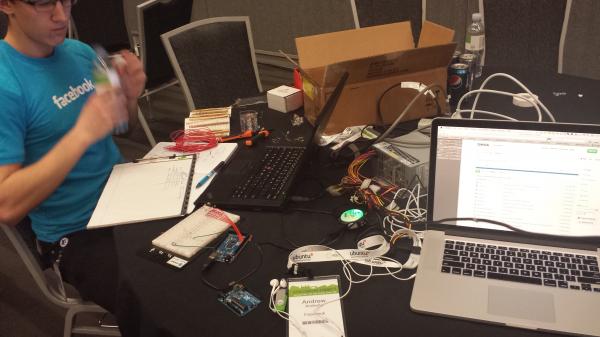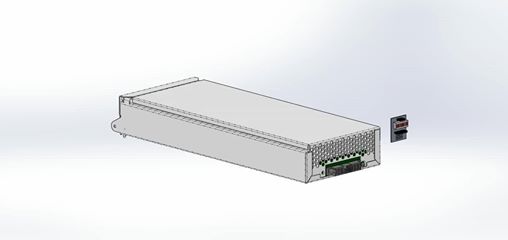How a Codeless Hack Won $5000 at Facebook Hackathon Without a Single Line of Code
This is an article telling you the story of a codeless hack performed by Andrew Andrade and Derek Jouppi. They are interns at Facebook and recently won the OCP Summit Hackathon by making a new BBU debugging tool without any much-needed team size and equipment.
Writing on the Opencompute.org, Andrew tells that they took part in the Open Compute Summit just like that and without any serious plans. They wanted to make something that could be immediately be contributed to Open Compute within 24 hours.
At the event, Andrew and Derek decided to perform a hack for the newly released Battery Backup Unit (BBU) on the Open Rack V2 design.
Dealing with a non-functional and failed BBU unit is a very difficult and time taking tasks. It involves the use of tons of probes, wires, DMM, or oscilloscope to determine the solution. Instead, they decided to use a coupler with the help of a simple ATMEGA microcontroller and LED display to make an intelligent tool.
As the display BBU were inaccessible, they wrote some Arduino code to simulate the BBU and some other code that would act as a digital-to-analog converter to fetch signals from the BBU. But, nothing made sense as there wasn’t much room in V2 rack to house a coupler and a microcontroller solution would be too expensive.
Then they decided to take the much needed Open Compute approach and create a simple and minimal solution by removing anything in the data center that didn’t contribute to efficiency.
As their codeless hack, they made a debug card that could be easily attached as a component at the back of a BBU as shown in the video below.
Explaining their pivot, they write: “We realized that, given the mapping of the pin outs, one solution would be to connect the signals to the status LED’s, which would give instant visualization to the problems with the BBU. While it would take manual diagnostics to determine issues, the cost of the device would be significantly lower, and it would be much easier to operate. For the added functionality, we included an output header.”
“This could be used in the future to connect to a microcontroller if a more automated method had to be deployed. Finally, since the BBU relied on a power supply to charge, we included a power header that could be used to connect to the power supply,” they explain further.
After preparing the design, they put it on the breadboard before preparing the final rendering of the product using mechanical CAD software.
This codeless debug tool would enable the techies working in the datacenter BBUs to quickly solve the problems.
We, at Kryptos Technology, promote the open source philosophy and believe in sharing the knowledge with our readers. Using the same open source philosophy, Andrew and Derek performed this codeless hack and further plan to release the specifications for their BBU hack to the open source community in the next few weeks.


